Is Wood Having a Moment (again)?
Ready, name that decade:
- Wood paneling
- Parquet flooring
- Wagon wheel décor
- Wood siding
If you guessed 1970s, 1530s, 1940s & 1980s, you’re correct. But since design is cyclical, there were many more years that those things surged in popularity.
Take wood flooring. That saw a rebirth just a short time ago in the late 20th century and early 2000s. There was a little break as modern industrial morphed into farmhouse industrial and farmhouse, but the cement flooring and painted cabinets of the last few years are now trending back to natural wood.
As interior plantscapers, we use wood as a biophilic design element – we use planters made from wood, attach plants to slabs of wood and put them on the wall and use driftwood in our designs. How we’re using wood continues to evolve.
Before we get to that…
Here’s a reminder on the commonly used ways wood is used in the interior:
Flooring: Wooden floors are a popular choice for their warmth and natural feel , which can help create a connection to nature.
Wall Cladding: Wooden wall cladding can create a natural feature wall and add interest and texture to the exterior of a home or building, or even in the interior of a room. If you’ve been to Seattle, you’ve seen many examples of buildings and homes with short, horizontal, honey-colored pieces of wood on an exterior. And if you’ve watched any show on HGTV in the last year, you’ve seen natural or painted wood used as a design feature on a wall.
Ceilings: Wooden ceilings can bring warmth and natural texture to a space and help create a sense of shelter and protection.
Structural elements: Incorporating wooden beams, columns or posts in a building’s design can create a sense of grounding and connection to nature. In San Diego and the Southwest, we have many beautiful examples of this in our homes and offices.
Furniture: Wooden furniture pieces such as chairs, tables, and shelves can bring natural touch and texture to a space.
Accents: Wooden accents, such as wooden frames, lamp bases, or decorative objects are good examples.
Old Wood, New Thinking: Biophilic Wood Art
For about the last ~5 years, we’ve seen driftwood make its way to our dining tables as centerpieces, even holding candles or succulents.
Good Earth Plants has been reimagining driftwood and wood art, combining moss and plants to make interesting décor for our clients. Some of these are natural analogues, meaning man-made elements that resemble or evoke nature, while many are real.
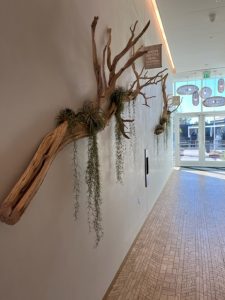
Wood is the ultimate biophilic media, from actual pieces of wood to wooden sculptures and carvings – they all add a natural element to a space. Check out these interesting pieces we have in our warehouse.
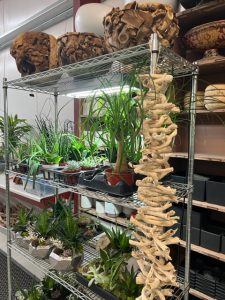
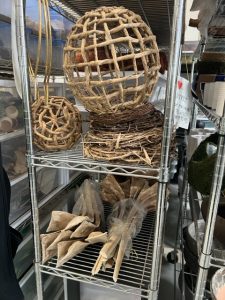
SEA-TAC Update: Seattle Airport’s New Biophilic Design Using Wood as Art
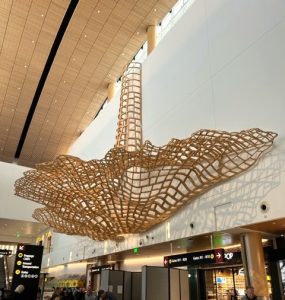
In 2021, Seattle’s SEA-TAC airport unveiled a total renovation and modernization of its North Satellite terminal. As you walk in, the first thing you notice is wood.
From Port Seattle’s website:
“Surrounded by warm wood and sunlight, the new North Satellite celebrates the natural wonder that is the Pacific Northwest. The iconic building is designed to evoke the movement of a meandering river. Notice how the building forms, such as the ceilings and corridors, curve and bend.”
While the entire area is beautiful, the most interesting aspect may be artist John Grade’s large-scale installation called Boundary.
“Boundary is a life-sized version of the expanding root structure of an old-growth Western Red Cedar and SEA’s largest art installation to date.”
Watch artist John Grade discuss his inspiration for the piece as it was installed.
Rethinking Wood in Design
As long as we’re rethinking outside the box, let’s take a look at a world renown architect who uses wood in incredibly interesting ways.
Japanese architect Shigeru Ban is known for his unique use of wood, not just as a building material, but as a design element. At the Mt. Fuji Heritage Center, he’s created a wood lattice around an inverted cone, created to resemble Mt. Fuji. To see more pictures and read more details about this breathtaking building, head to Architizer.com.
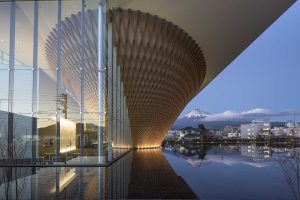
Mt Fuji World Heritage Center by architect Shigeru Ban, photo from Architizer
We’d love to see how you incorporate wood into your designs! Tag us on social – @goodearthplantcompany
